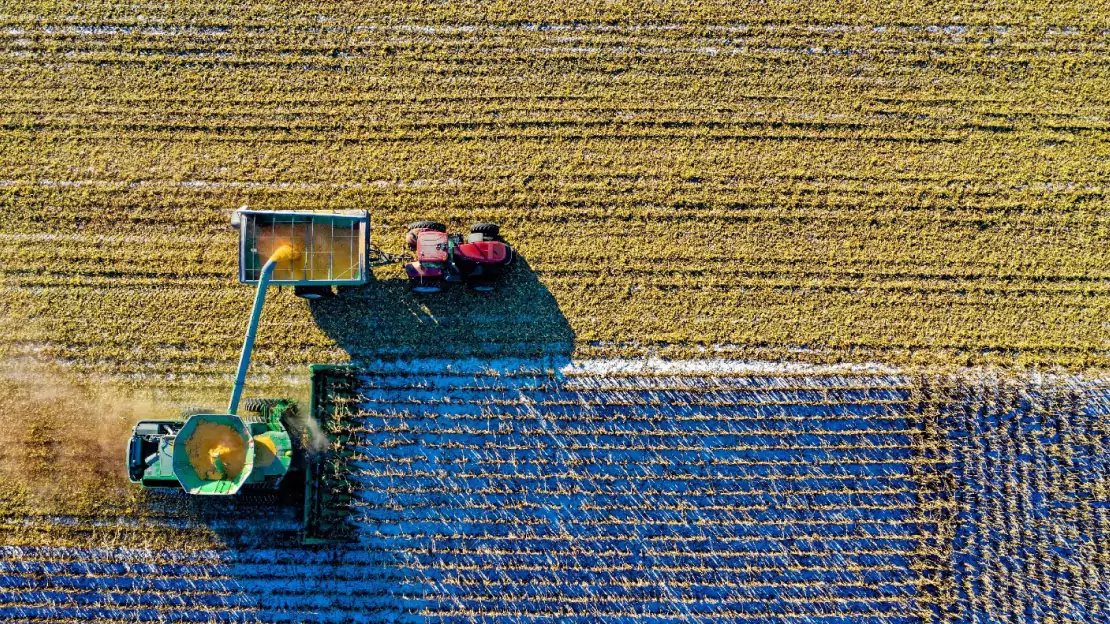Maximizing R&D Tax Credits for Agricultural Innovation

As advisors in the field of agribusiness accounting, we have observed the transition toward advanced technologies essential for operational sustainability and growth. These innovations are also important when considering potential credits and deductions to help your business financially succeed.
Featured Topics:
Beyond Traditional Farming
Modern farming is no longer solely defined by weathered hands and instinct. Although these qualities remain invaluable, today’s farmers have become pioneers of innovation. Predicting optimal planting and harvesting times with AI and even utilizing tractors that navigate fields without human operators. According to estimates, 87% of U.S. agriculture businesses are currently using artificial intelligence technologies. This is more than just a statistic,; it represents a shift in the foundation of agriculture towards innovations that sustain the demands of a growing global population.
Research & Development Activities in Large-Scale Agriculture
Research and development tax credits represent a valuable yet underutilized benefit available to agriculture businesses that invest in innovative activities.
Common R&D activities include:
- Improving operational efficiency through automated farm equipment.
- Developing new, more resilient plant varieties or animal breeds.
- Refining sustainable farming methods for reduced environmental impact.
- Enhancing post-harvest handling and processing methods.
- Testing and implementing new methods for soil and pest management.
Participating in these activities can offer substantial financial benefits and significantly impact the bottom line and growth trajectory of a business.

Understanding the IRS Requirements
Based on the IRS criteria outlined in Section 41, agricultural operations can claim Research and Development tax credits for qualified research expenses (QREs) that fall into three main categories.
1. Wage Expenses for Agricultural Research Personnel
Farmers and agricultural businesses can claim wages paid to employees engaged in qualified agricultural research services, including those conducting experiments with new crop varieties, developing improved farming techniques, or testing innovative equipment. The “substantially all” rule applies on an employee-by-employee basis; if 80% or more of an agricultural worker’s time involves qualified research activities, their entire wages qualify for the credit.
2. Agricultural Supplies and Materials
The credit applies to non-depreciable tangible supplies used directly in agricultural research activities and materials for constructing prototype equipment. However, depreciable property like tractors or buildings, as well as general administrative costs, are excluded.
3. Contract Research with Agricultural Partners
A percentage of the pay to external contractors for qualified research performed on their behalf can be claimed. The research must be conducted under prior written agreements where the farm operation pays, regardless of research success, and retains rights to the results, ensuring that collaborative agricultural innovation projects with research institutions or private companies can qualify for substantial tax benefits.
The Financial Advantages
For large-scale agricultural operations, R&D tax credits can deliver financial benefits to further innovation and expansion. Substantial tax deductions can potentially provide immediate cash flow that can be reinvested into more advanced equipment, expanding research facilities, and more. For agricultural businesses operating on traditionally thin profit margins, these credits can represent the difference between gradual growth and breakthrough expansion.
The Importance of Proper Documentation
For any business pursuing R&D tax credits, comprehensive record-keeping is the foundation for successful claims and maximizing available benefits. Detailed documentation that demonstrates the qualifying nature of their research activities must be maintained.
The IRS requires agriculture businesses to prove every dollar claimed through verifiable records showing exactly how much time agricultural scientists spent on qualifying research versus routine farming operations, detailed invoices and receipts for research supplies, and contracts that explicitly outline research objectives and risk-bearing arrangements.
Without this rigorous documentation approach, agriculture businesses risk having their R&D credit claims reduced or entirely disallowed, making the investment in proper record-keeping systems and procedures necessary for innovative agriculture businesses to protect and maximize their R&D tax credit opportunities.

The Value of Specialized Guidance
Working with accountants who specialize in R&D tax credits provides your business with a competitive edge, beyond traditional tax preparation services. Unlike conventional accounting firms that may treat these credits as an afterthought, agribusiness accounting advisors understand the connection between agricultural operations and tax law, allowing them to maximize potential savings. Most importantly, we serve as strategic partners to agribusiness leaders, guiding them through the R&D tax credit process and helping them reinvest those savings into continued innovation. This creates a sustainable cycle of growth and can improve cash flow for forward-thinking agricultural operations.
Technological Improvements
Integrating technologies like drones, satellite imagery, and advanced sensors into farm operations can qualify as R&D activity, especially when businesses develop new systems and procedures. For example, creating precision application maps from drone and satellite data or enhancing GPS capabilities often involves experimentation and innovation. That’s key criteria for R&D tax credits.
These technological development efforts generate qualifying expenses across all three QRE categories: wages paid to agricultural technicians who spend months calibrating drone flight patterns and sensor accuracy, supplies used in field testing new sensor hardware, and contract research expenses paid to technology partners for developing proprietary software.
R&D activities can generate substantial tax credits for large-scale agricultural operations investing heavily in these technological improvements, effectively transforming necessary technology investments into government-subsidized innovation, while businesses retain intellectual property and competitive advantages in the rapidly evolving agriculture marketplace.
